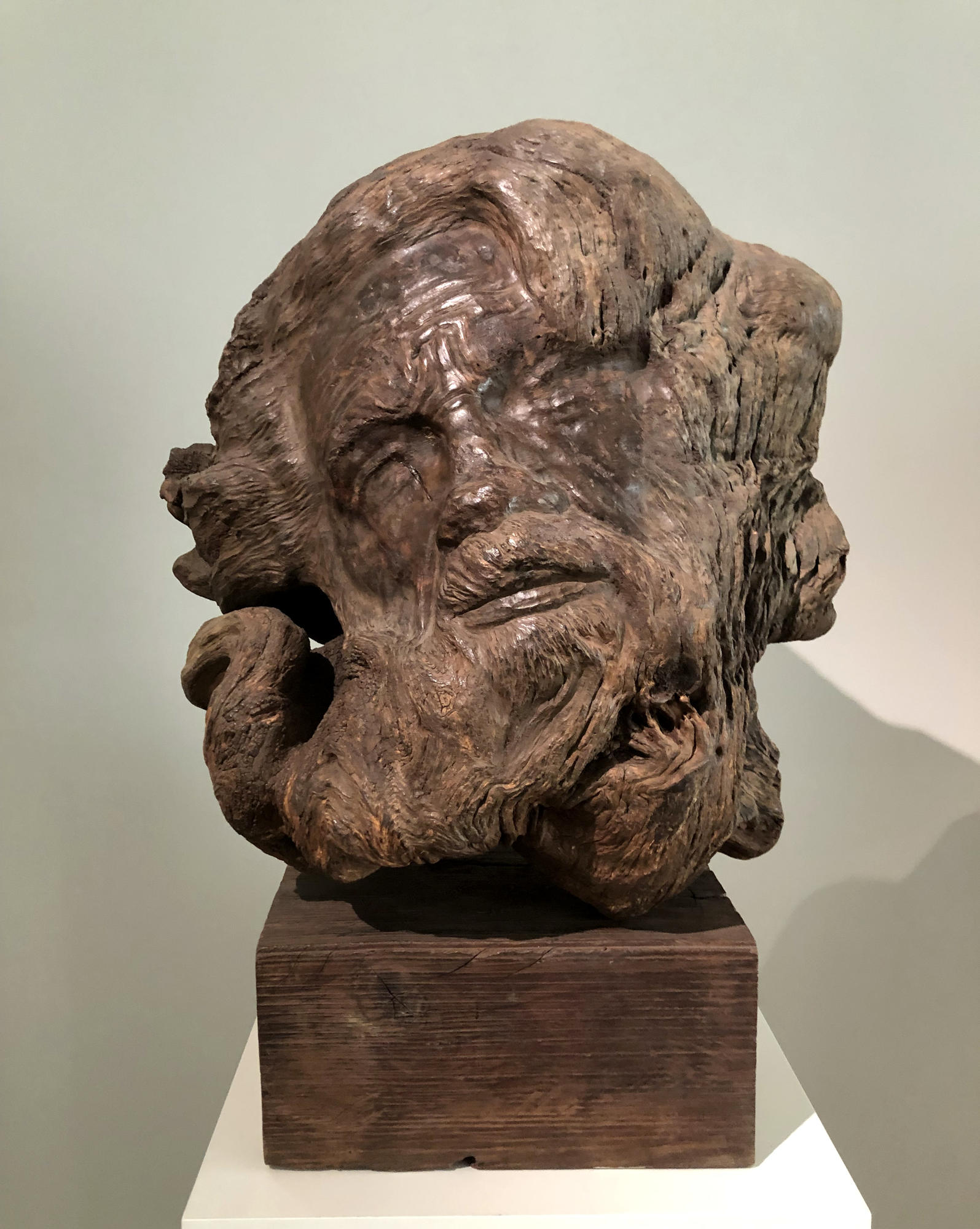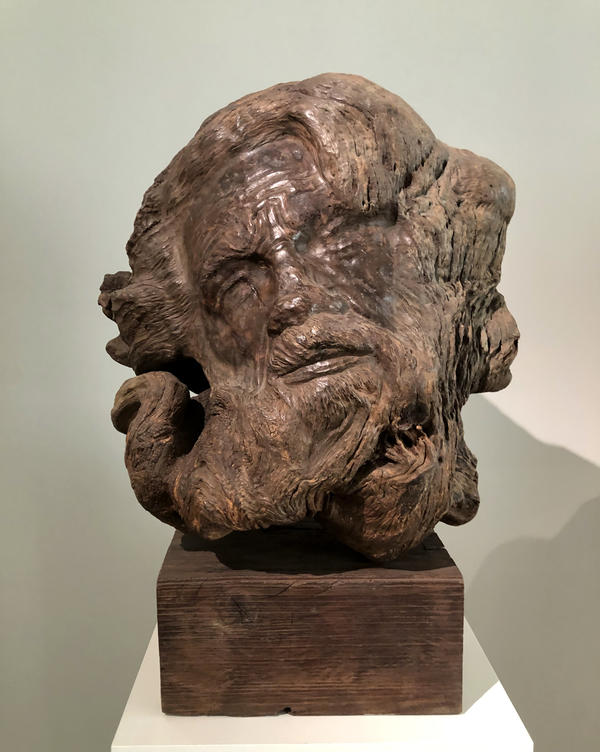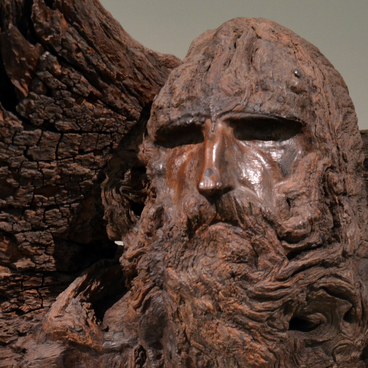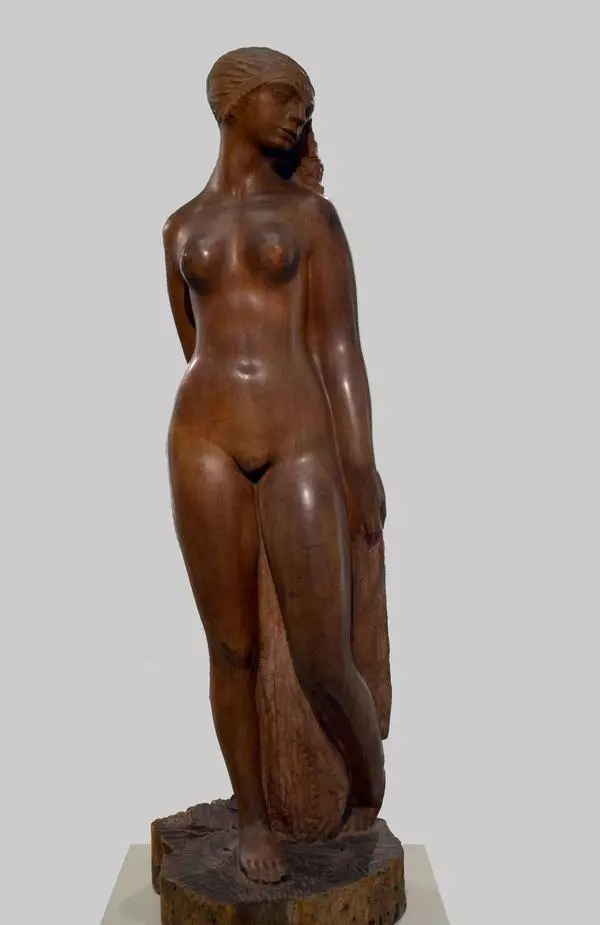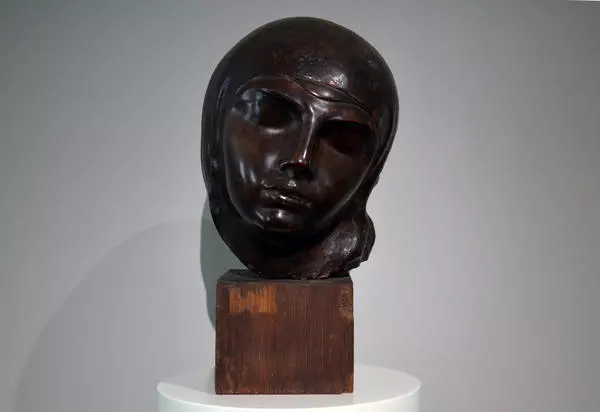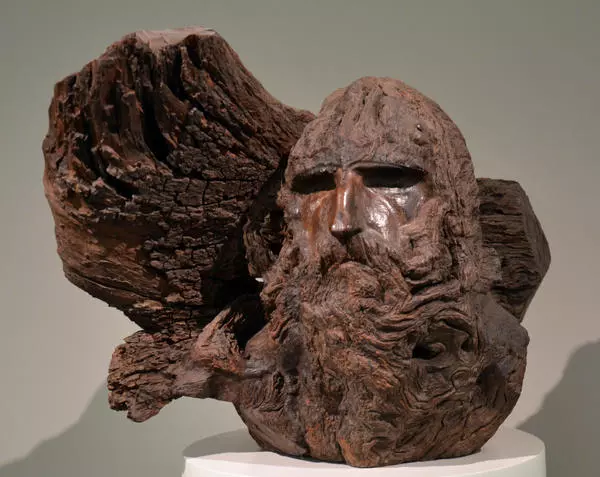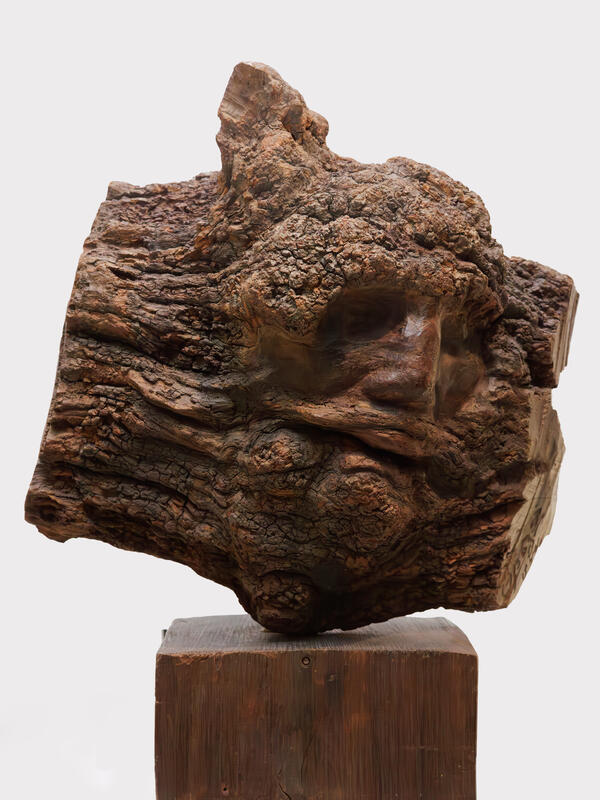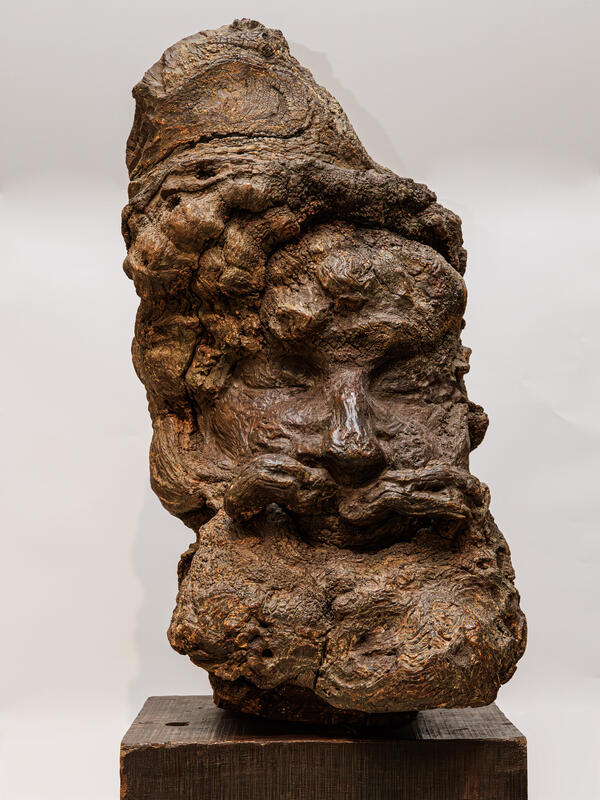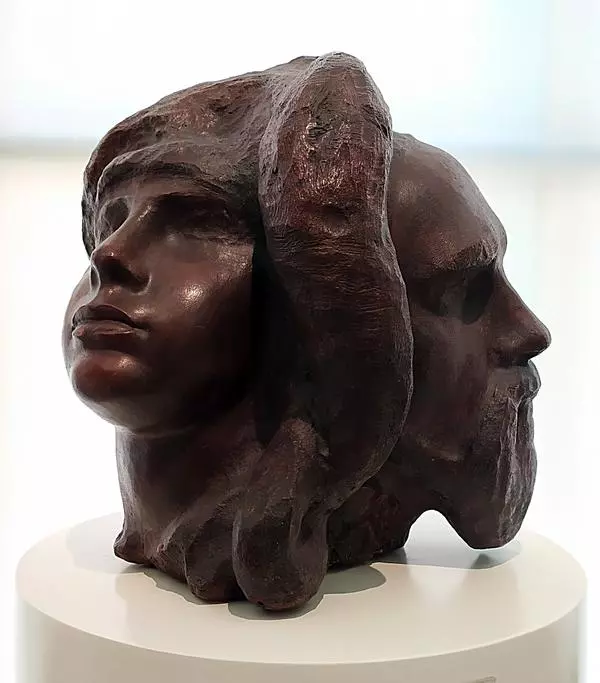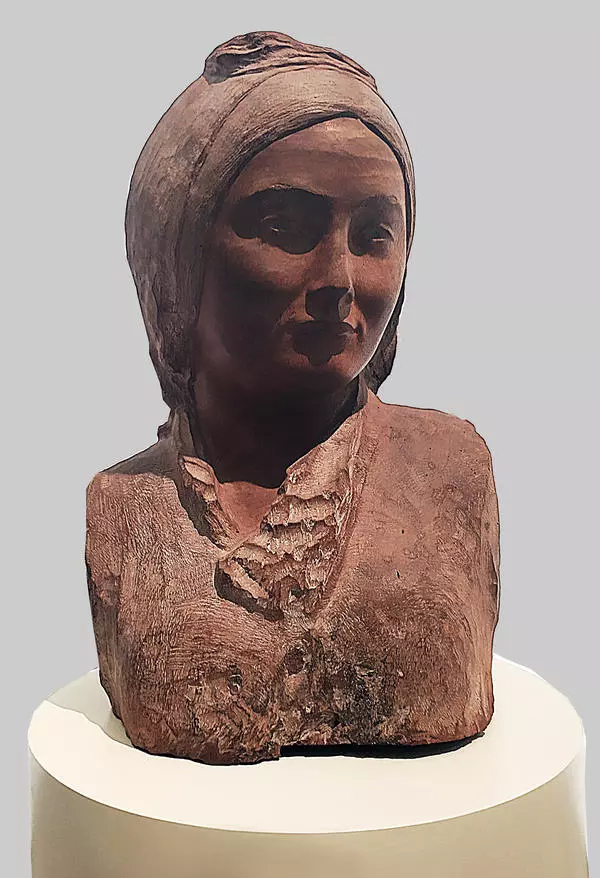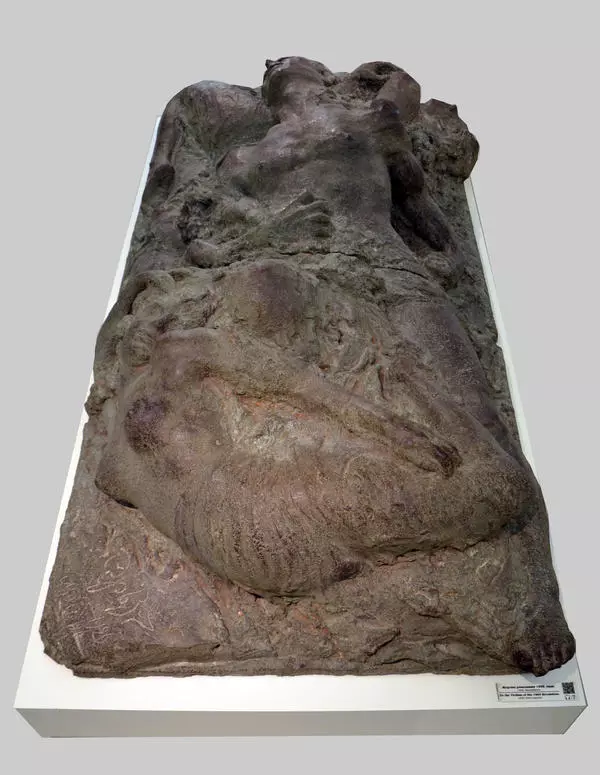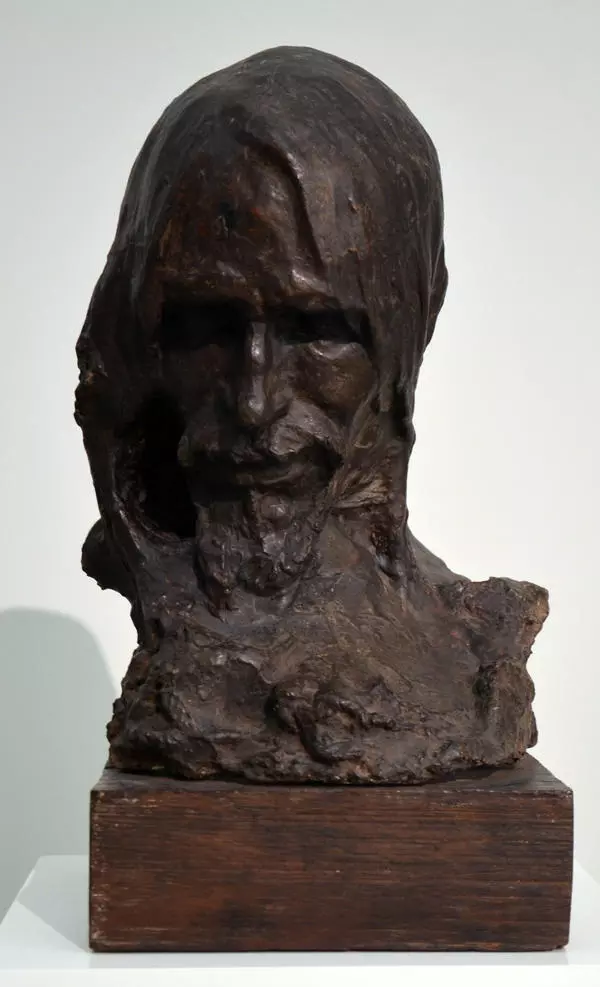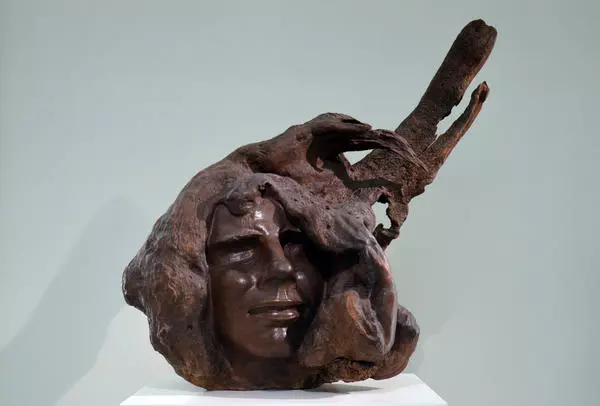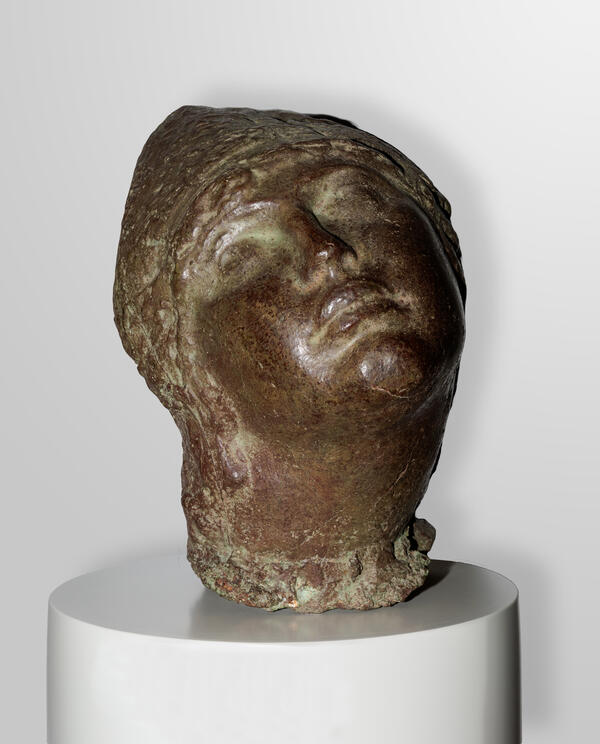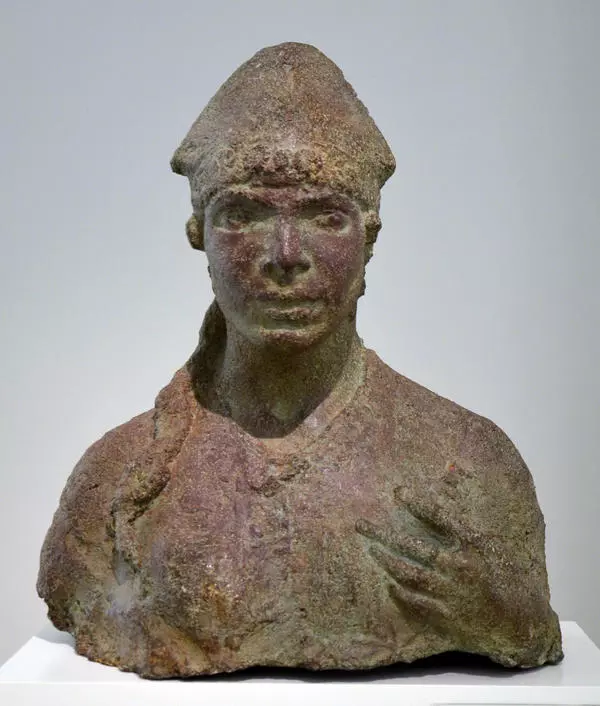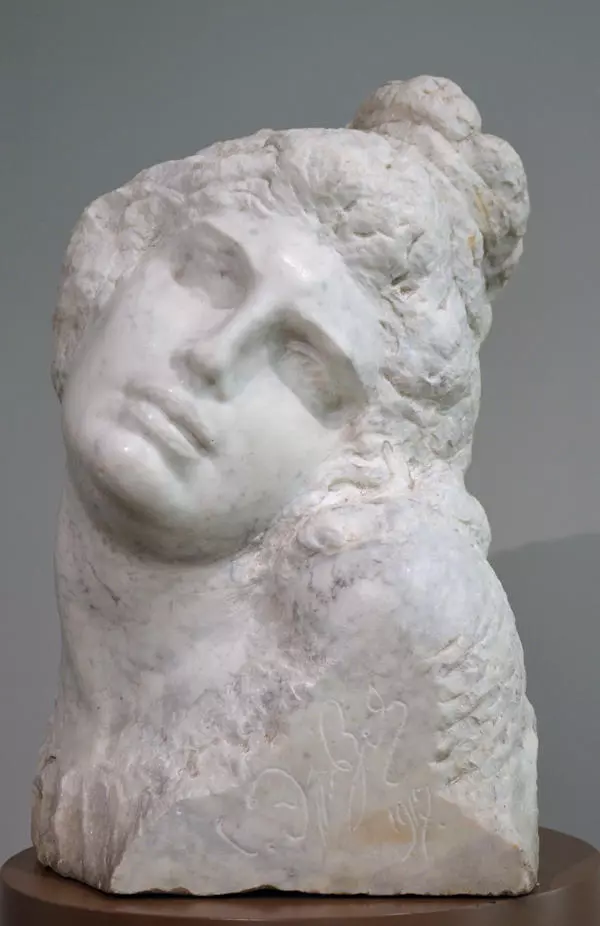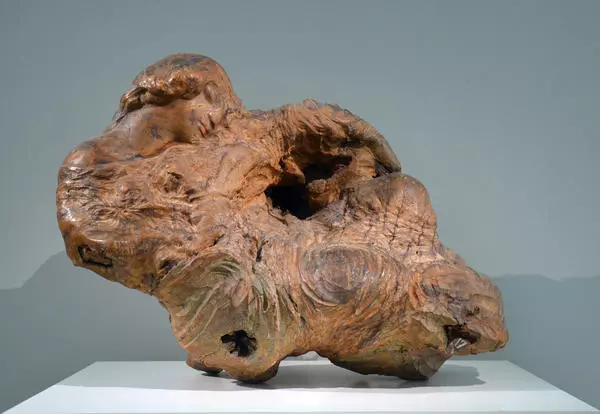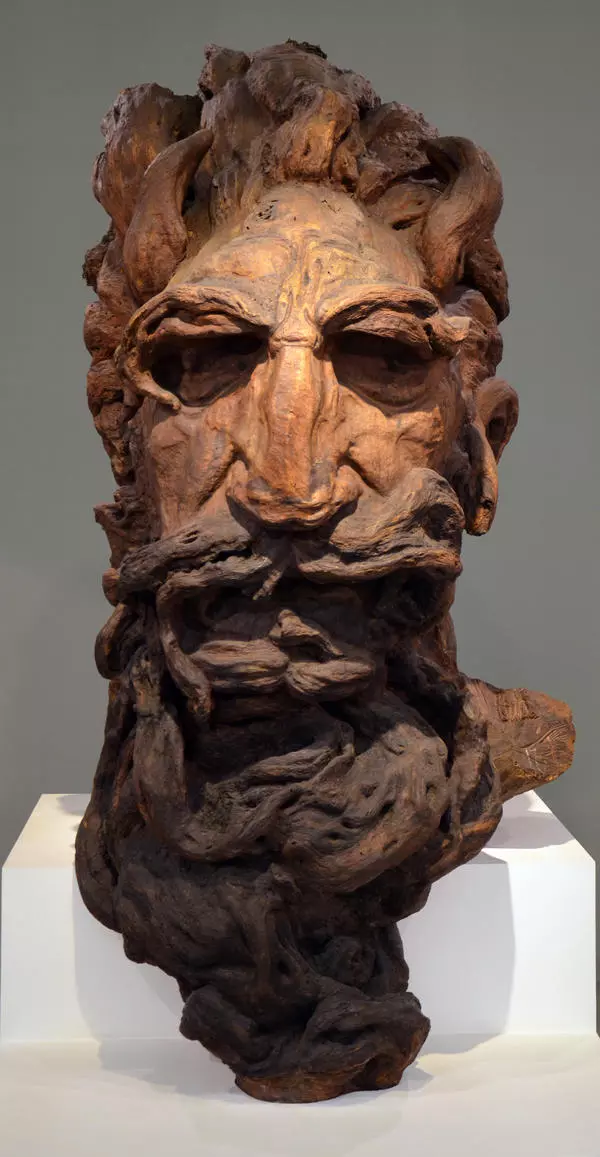Stepan Erzia cherished the image of Michelangelo throughout his whole life. The artist always admired strong personalities and immortalized them in his sculptures. But it was the Renaissance genius who inspired him to work with marble during his stay in Italy. Like Michelangelo, he sculpted without sketches and used the direct carving technique. Almost none of Erzia’s marble creations have survived to this day. However, his unique heritage remained in the form of compositions carved in exotic subtropical wood.
Erzia’s Argentinean period lasted for more than 20 years. In South America, Erzia began to use quebracho and algarrobo, particularly hard types of wood that are very difficult to process. Chisels and cutters made chips, so the sculptor needed a special technique. He used a drill to remove thin layers of material. This allowed to preserve the natural plastic of wood. Erzia sometimes left roots or growths intact and processed only one part of the workpiece.
On the peak of his Argentinean period, he created his famous sculpture Michelangelo. 1940. Quebracho. His favorite material itself suggested the compositional solution and the psychological structure of the image. The artist just filled it with strength of mind, inner tension and detachment. As always, there was no preliminary sketch. In the bizarre curves of the wood chunk, Erzia foresaw the outlines of his future creations. Among the extensive gallery of his portrait images, you can catch some common features. This is anxiety and elevation over the ordinary.
This genius of the quebracho forests (as he was nicknamed in Argentina) masterfully recreated the plasticity and grace of bodies, the beauty and spirituality of faces. In his images, one can notice an external resemblance to the master himself. He gave faces his own outlines, emphasizing unity with his characters. In the sculpture of Michelangelo, this similarity is also noticeable. However, here it was not so important for Erzia to accurately reproduce the image or to impart recognizable facial features to it. The main thing was to reflect the moods which he had experienced himself.
During his twilight years, the genius of the Renaissance was often haunted by gloomy thoughts. This was reflected in his poetic work, and in the paintings of that time. The author was tormented by painful thoughts, dissatisfaction with reality and internal ambivalence. Such similarity of mood and attitude filled the sculpture with tragedy and hopelessness. As basis for the sculpture, Erzia took Michelangelo’s self-portrait on the Last Judgment fresco. On it, the master appears exhausted and depressed, and Erzia felt the same at the end of his life.
Many sculptors tried to work with quebracho, but this wood surrenders only to the elect. It allowed Stepan Erzia to create images of strong and integral natures, who at the same time had their doubts and sufferings.
Erzia’s Argentinean period lasted for more than 20 years. In South America, Erzia began to use quebracho and algarrobo, particularly hard types of wood that are very difficult to process. Chisels and cutters made chips, so the sculptor needed a special technique. He used a drill to remove thin layers of material. This allowed to preserve the natural plastic of wood. Erzia sometimes left roots or growths intact and processed only one part of the workpiece.
On the peak of his Argentinean period, he created his famous sculpture Michelangelo. 1940. Quebracho. His favorite material itself suggested the compositional solution and the psychological structure of the image. The artist just filled it with strength of mind, inner tension and detachment. As always, there was no preliminary sketch. In the bizarre curves of the wood chunk, Erzia foresaw the outlines of his future creations. Among the extensive gallery of his portrait images, you can catch some common features. This is anxiety and elevation over the ordinary.
This genius of the quebracho forests (as he was nicknamed in Argentina) masterfully recreated the plasticity and grace of bodies, the beauty and spirituality of faces. In his images, one can notice an external resemblance to the master himself. He gave faces his own outlines, emphasizing unity with his characters. In the sculpture of Michelangelo, this similarity is also noticeable. However, here it was not so important for Erzia to accurately reproduce the image or to impart recognizable facial features to it. The main thing was to reflect the moods which he had experienced himself.
During his twilight years, the genius of the Renaissance was often haunted by gloomy thoughts. This was reflected in his poetic work, and in the paintings of that time. The author was tormented by painful thoughts, dissatisfaction with reality and internal ambivalence. Such similarity of mood and attitude filled the sculpture with tragedy and hopelessness. As basis for the sculpture, Erzia took Michelangelo’s self-portrait on the Last Judgment fresco. On it, the master appears exhausted and depressed, and Erzia felt the same at the end of his life.
Many sculptors tried to work with quebracho, but this wood surrenders only to the elect. It allowed Stepan Erzia to create images of strong and integral natures, who at the same time had their doubts and sufferings.
